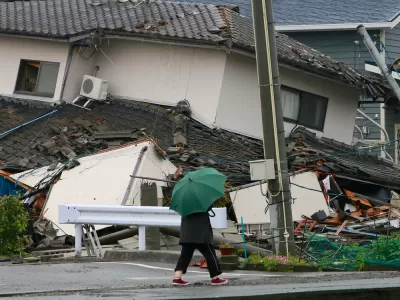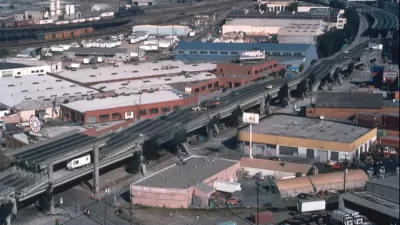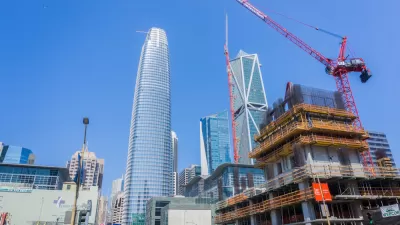A 7.5 magnitude earthquake struck the Indonesian island of Sulawesi on Sept. 25, followed by a massive tsunami. Soil liquefaction caused by the tremor resulted in 1,700 homes being "swallowed" as the soil shifted. Deaths exceeded 1,400 on Oct. 3.

"Dramatic footage has emerged from the city of Palu on the Indonesian island of Sulawesi, with buildings collapsing as the ground slides beneath them," reports Nicola Davis for The Guardian. See the satellite image of Balaroa neighbourhood on October 1. On Wednesday, deaths surpassed 1,400.
Joe Sommerlad of The Independent provides a succinct description of the process of soil liquefaction, explaining what happened on Sulawesi, the etymology of the term, and other quakes where played a role in great death and destruction.
What is liquefaction?
The term refers to saturated sand and silt – that is, ground in which the space between particles is completely filled with water – taking on liquid form after the earth is subjected to aggressive disturbance by a powerful quake. Areas with shallow water tables close to the sea or rivers are particularly susceptible.
The quake increases water pressure, causing particles in the soil to lose contact with one another and sandy ground to ooze apart, potentially creating landslides and rattling buildings, trees, and telegraph poles as the shifting earth slides about beneath them.
If conditions are right, the earth acts like quicksand, according to American hydrological expert Allen Hazen, who is credited with creating the word while investigating the fall of California’s Calaveras Dam in 1918.
What happened in Indonesia?
In Sulawesi, approximately 1,700 houses were swallowed up in the Palu neighbourhood of Balaroa while an entire new development in Petobo was wiped away as though it had never been there.
"When the quake hit, the layers below the surface of the earth became muddy and loose," said Sutopo Purwo Nugroho, spokesman for Indonesia's national disaster mitigation agency.
Mitigation techniques
"Dr. Stavroula Kontoe of Imperial College London says disasters are not inevitable, adds Davis of The Guardian.
"There are several mitigation techniques which can limit or even eliminate [soil liquefaction's] consequences. These techniques usually involve strengthening the soil deposits in areas where liquefaction has been identified as a major hazard and/or adopting drainage measures to prevent the increase of the water pressure during the strong shaking."
"Dr. Carmine Galasso from University College London agrees there are ways to reduce risk," continues Davis.
"Building codes and standards in many countries require engineers to consider the effects of soil liquefaction in the design of new buildings and infrastructure such as bridges, embankment dams and retaining structures," he said.
Where else has the phenomenon occurred?
"The problem was last experienced on such a serious scale in Urayasu, Japan, following the 2011 Tōhoku earthquake and tsunami," adds Sommerlad. The earthquake is identified with the Fukushima Daiichi nuclear disaster. As much as 86 percent of the city's land was liquefied as a result of the disaster, which killed 15,896 people in total. It took six years to repair the damage to its subterranean sewage, water, and gas facilities.
In the U.S., liquefaction of soils below the Marina District in San Francisco during the 1989 Loma Prieta Earthquake caused massive destruction.
FULL STORY: Indonesia earthquake: What is liquefaction and what role did it play in the natural disaster?

Trump Administration Could Effectively End Housing Voucher Program
Federal officials are eyeing major cuts to the Section 8 program that helps millions of low-income households pay rent.

Planetizen Federal Action Tracker
A weekly monitor of how Trump’s orders and actions are impacting planners and planning in America.

Ken Jennings Launches Transit Web Series
The Jeopardy champ wants you to ride public transit.

Washington Legislature Passes Rent Increase Cap
A bill that caps rent increases at 7 percent plus inflation is headed to the governor’s desk.

From Planning to Action: How LA County Is Rethinking Climate Resilience
Chief Sustainability Officer Rita Kampalath outlines the County’s shift from planning to implementation in its climate resilience efforts, emphasizing cross-departmental coordination, updated recovery strategies, and the need for flexible funding.

New Mexico Aging Department Commits to Helping Seniors Age ‘In Place’ and ‘Autonomously’ in New Draft Plan
As New Mexico’s population of seniors continues to grow, the state’s aging department is proposing expanded initiatives to help seniors maintain their autonomy while also supporting family caregivers.
Urban Design for Planners 1: Software Tools
This six-course series explores essential urban design concepts using open source software and equips planners with the tools they need to participate fully in the urban design process.
Planning for Universal Design
Learn the tools for implementing Universal Design in planning regulations.
Heyer Gruel & Associates PA
Ada County Highway District
Institute for Housing and Urban Development Studies (IHS)
City of Grandview
Harvard GSD Executive Education
Toledo-Lucas County Plan Commissions
Salt Lake City
NYU Wagner Graduate School of Public Service




























